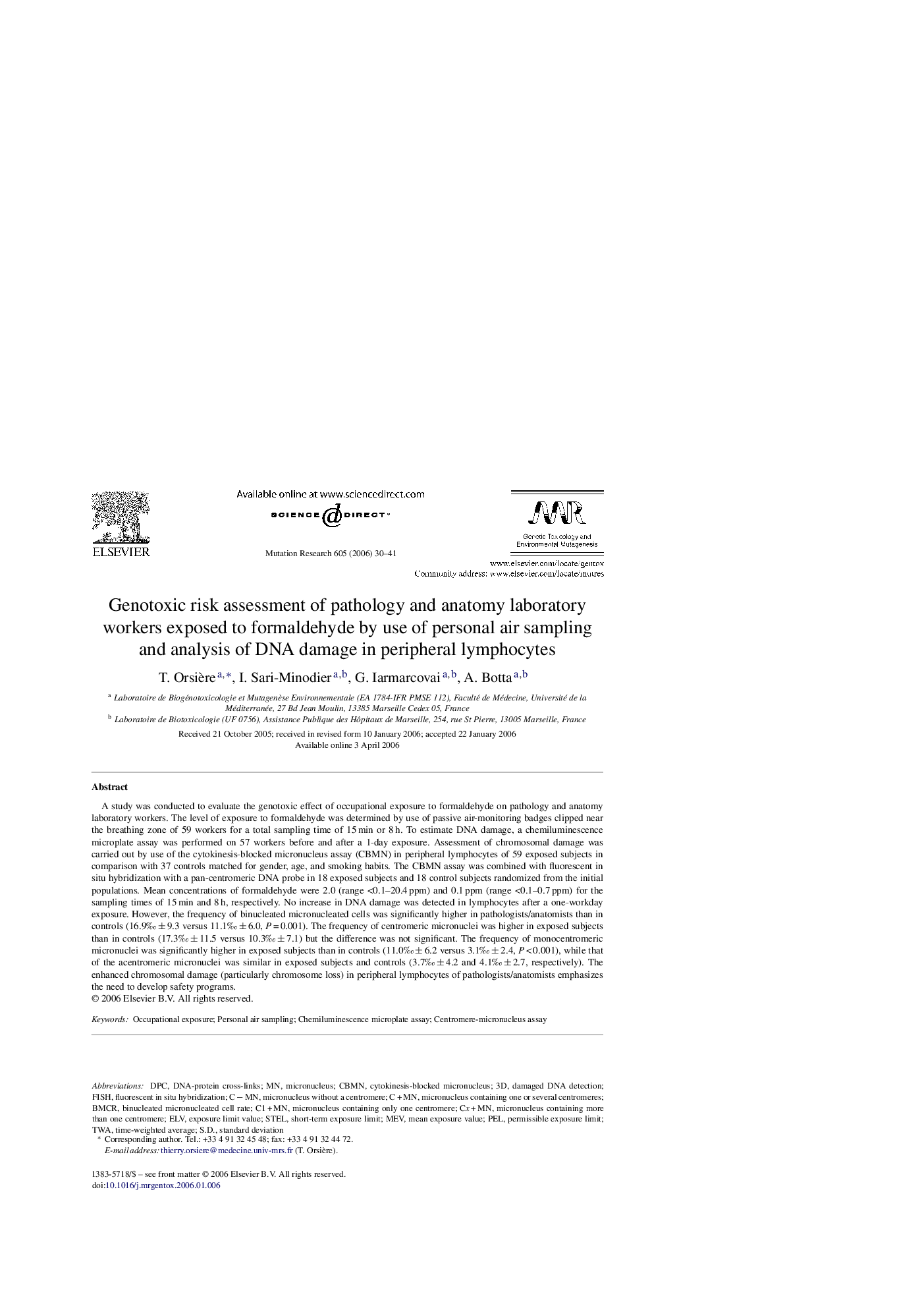| Article ID | Journal | Published Year | Pages | File Type |
|---|---|---|---|---|
| 2149370 | Mutation Research/Genetic Toxicology and Environmental Mutagenesis | 2006 | 12 Pages |
A study was conducted to evaluate the genotoxic effect of occupational exposure to formaldehyde on pathology and anatomy laboratory workers. The level of exposure to formaldehyde was determined by use of passive air-monitoring badges clipped near the breathing zone of 59 workers for a total sampling time of 15 min or 8 h. To estimate DNA damage, a chemiluminescence microplate assay was performed on 57 workers before and after a 1-day exposure. Assessment of chromosomal damage was carried out by use of the cytokinesis-blocked micronucleus assay (CBMN) in peripheral lymphocytes of 59 exposed subjects in comparison with 37 controls matched for gender, age, and smoking habits. The CBMN assay was combined with fluorescent in situ hybridization with a pan-centromeric DNA probe in 18 exposed subjects and 18 control subjects randomized from the initial populations. Mean concentrations of formaldehyde were 2.0 (range <0.1–20.4 ppm) and 0.1 ppm (range <0.1–0.7 ppm) for the sampling times of 15 min and 8 h, respectively. No increase in DNA damage was detected in lymphocytes after a one-workday exposure. However, the frequency of binucleated micronucleated cells was significantly higher in pathologists/anatomists than in controls (16.9‰ ± 9.3 versus 11.1‰ ± 6.0, P = 0.001). The frequency of centromeric micronuclei was higher in exposed subjects than in controls (17.3‰ ± 11.5 versus 10.3‰ ± 7.1) but the difference was not significant. The frequency of monocentromeric micronuclei was significantly higher in exposed subjects than in controls (11.0‰ ± 6.2 versus 3.1‰ ± 2.4, P < 0.001), while that of the acentromeric micronuclei was similar in exposed subjects and controls (3.7‰ ± 4.2 and 4.1‰ ± 2.7, respectively). The enhanced chromosomal damage (particularly chromosome loss) in peripheral lymphocytes of pathologists/anatomists emphasizes the need to develop safety programs.
